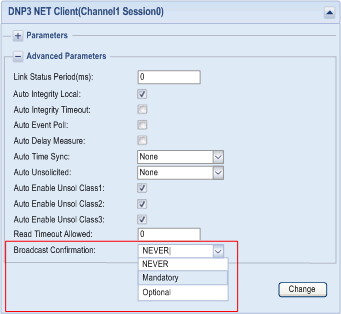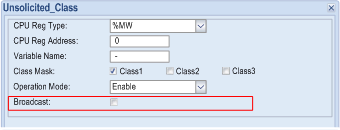|
DNP3 Channel Configuration Over UDP
|
|
|
Original instructions
|
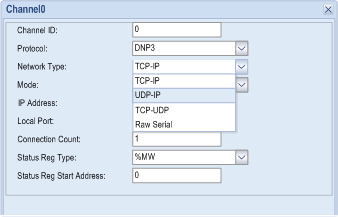
|
UDP-IP
|
|||
|---|---|---|---|
|
Client
|
Server
|
||
|
Name
|
Description
|
Name
|
Description
|
|
Dest port
|
Destination port for UDP
|
Local port
|
Local port for UDP; it must be unique.
|
|
Local Port
|
Local port for UDP-IP; it must be unique in current channel. Exception: 0 means that the local port is generated automatically by the system
|
Destination port
|
Destination port for UDP. 0 is allowed, which means that the server uses the port from which the master sent the request.
|
|
Unsol destination port
|
Port that the server uses to send initial unsolicited responses in UDP-IP
|
||
|
TCP-UDP
|
|||
|---|---|---|---|
|
Client
|
Server
|
||
|
Name
|
Description
|
Name
|
Description
|
|
TCP destination port
|
Destination port for TCP
|
TCP local port
|
Local port for TCP
|
|
UDP broadcast port
|
Port that sends broadcasts in TCP-UDP
|
UDP local port
|
Port that receives broadcasts (available for TCP-UDP)
|
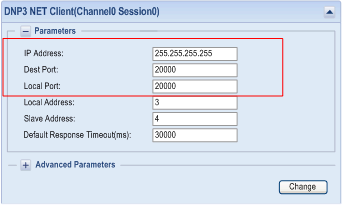
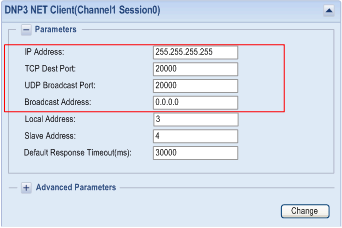
|
Options
|
Definition address
|
Special use
|
|---|---|---|
|
Optional
|
FFFF hex
|
All-call, application layer confirmation to clear IIN1.0 is optional.
|
|
Mandatory
|
FFFE hex
|
All-call, application layer confirmation to clear IIN1.0 is mandatory.
|
|
Never
|
FFFD hex
|
All-call, application layer confirmation must not be required to clear IIN1.0.
|
